Business
Netanyahu offers Iran water crisis help if regime removed amid shortage
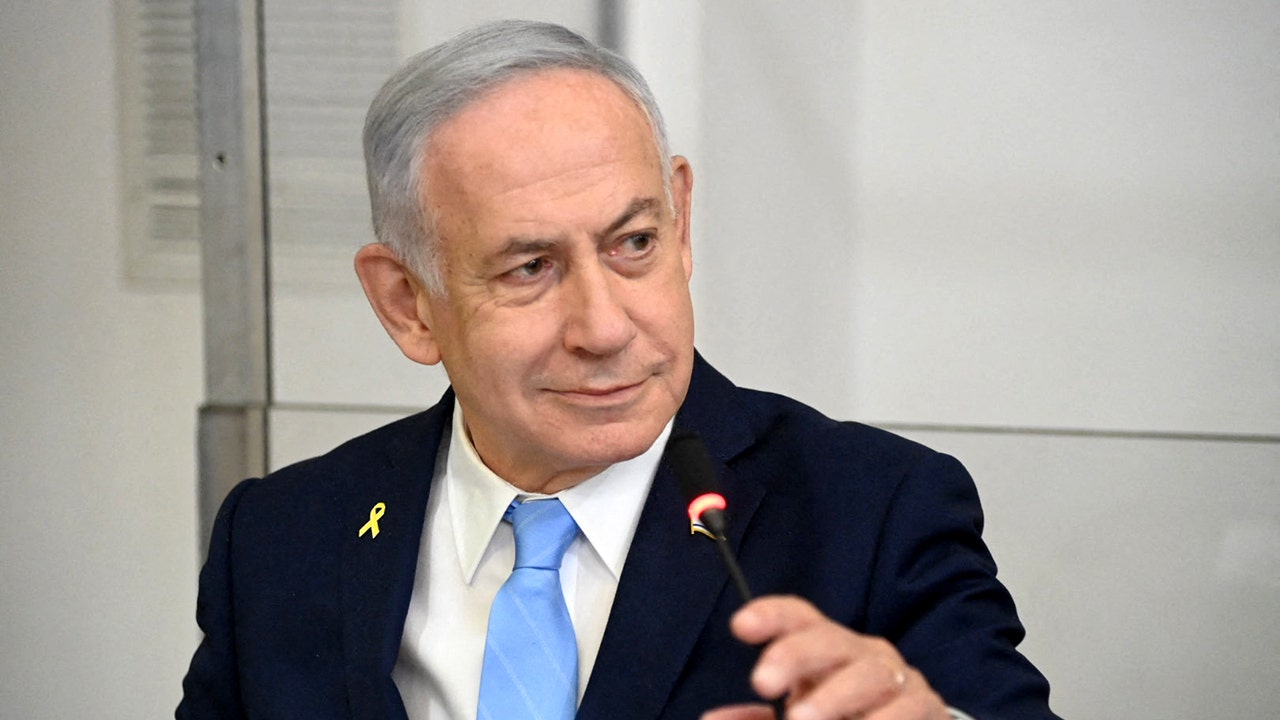
NEWYou can now listen to Fox News articles!
Iran is facing an intense water crisis, but help could soon come from an unlikely source – provided the “tyrants” are out of power.
Israeli Prime Minister Benjamin Netanyahu issued a message to the people of Iran just days after Iranian President Masoud Pezeshkian warned against excessive water usage, saying the country is on the brink of severe shortages.
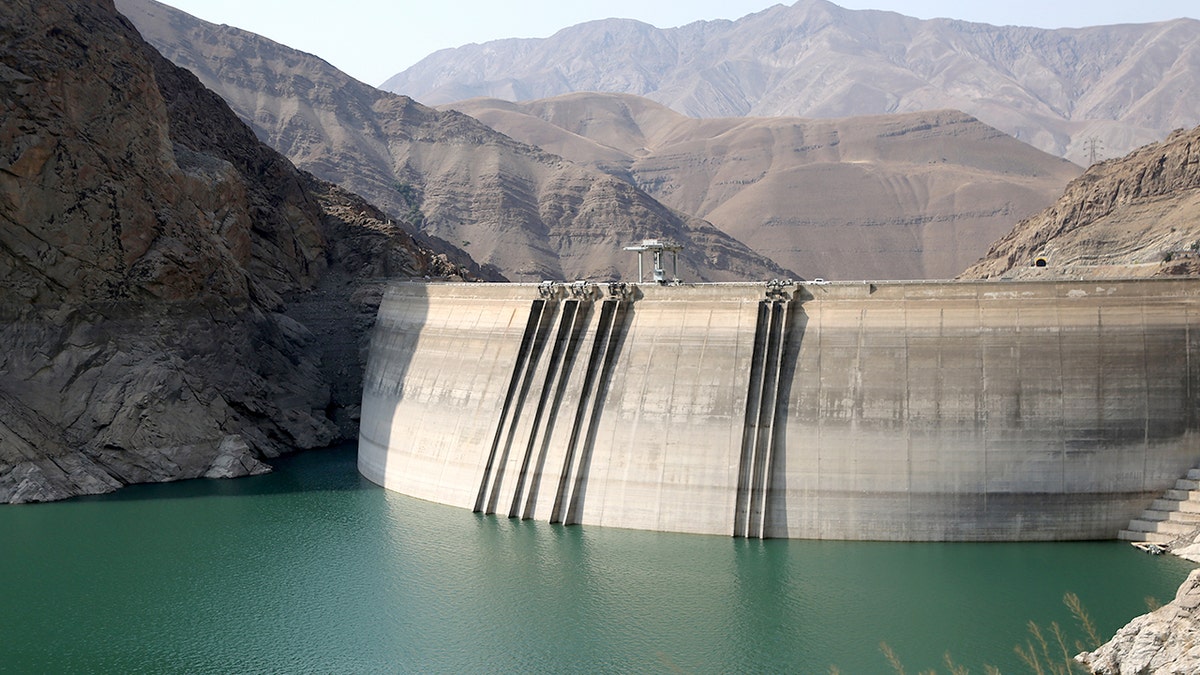
The Amir Kabir Dam on the outskirts of Tehran on July 29, 2025. President Masoud Pezeshkian on Sunday warned that parts of Iran face a “serious” water crisis. (Xinhua via Getty Images)
HERE’S WHAT A POST-AYATOLLAH IRAN COULD LOOK LIKE IF WAR WITH ISRAEL LEADS TO REGIME’S FALL
Iran has faced electricity, gas and water shortages during peak-demand months due to mismanagement and overconsumption, according to Reuters. The outlet, citing the semi-official Tasnim news agency, reported that severe shortages could hit the country as soon as next month.
“The thirst for water in Iran is only matched by the thirst for freedom,” Netanyahu said in a video addressing the people of Iran.
Netanyahu compared the regime’s treatment of its citizens to Israel’s struggle against it, saying, “Your dictators impose tyranny and poverty upon you – just as they impose war on us.”
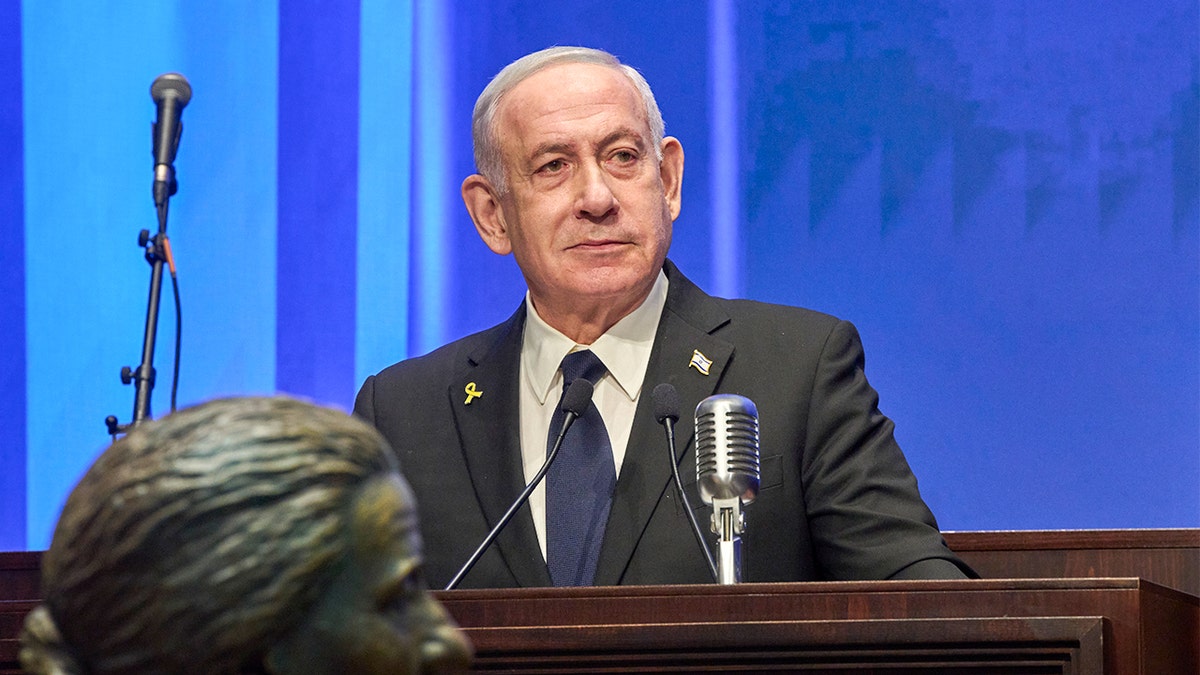
Israeli Prime Minister Benjamin Netanyahu speaks at the opening ceremony of the Knesset Museum in Jerusalem, Monday, Aug.11, 2025. (AP Photo/Ohad Zwigenberg, Pool)
NETANYAHU CALLS ON IRANIAN CITIZENS TO SEIZE ‘OPPORTUNITY’ FOR REGIME CHANGE
While he stopped short of explicitly calling for revolution or regime change, the Israeli leader dangled a clear incentive for Iranians to rise up: remove the regime, and Israel will help end the country’s water crisis.
“So here is the great news: The moment your country is free, Israel’s top water experts will flood into every Iranian city bringing cutting-edge technology and know-how. We will help Iran recycle water; we’ll help Iran desalinate water.”
Iran expert and editor-in-chief of The Foreign Desk Lisa Daftari said Netanyahu’s message was “a clear policy signal wrapped in humanitarian aid.”
“He told them that Israel has the technology, the expertise, and the willingness to end their water crisis, but that this help will flow only when Iran is no longer ruled by the current regime. It was a direct link between political change and tangible improvement in daily life, acknowledging the daily struggles of the Iranian people while putting the responsibility and the opportunity squarely in their hands,” Daftari told Fox News Digital.
“By tying water to freedom, he’s making the idea of resistance more immediate and personal. It is a nod to the commonalities shared by the Israeli and Iranian people who just want to live normal lives away from radicalism,” she added.
In June, Israel and Iran fought a 12-day war after Jerusalem acted against Tehran’s nuclear program. The U.S. eventually joined, aiding Israel in destroying nuclear facilities, including Fordow, Natanz and Isfahan.
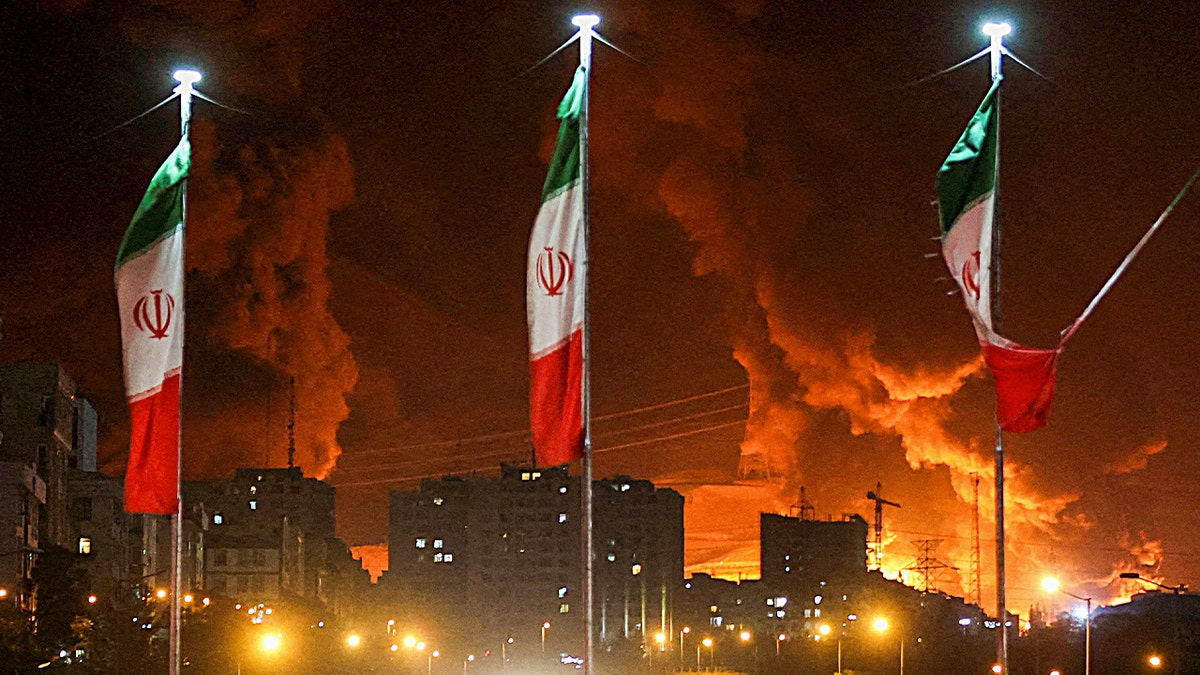
Iranian flags fly as fire and smoke from an Israeli attack on Sharan Oil depot rise in Tehran, June 15, 2025. (Majid Asgaripour/WANA (West Asia News Agency) via Reuters)
CLICK HERE TO GET THE FOX NEWS APP
After the war, the Iranian regime intensified its crackdown on civilians. On Tuesday, Reuters reported that Iranian police claimed to have arrested as many as 21,000 people during the conflict. Despite the arrests, there have been no credible reports of mass demonstrations or coup attempts.
Netanyahu is not the only one criticizing the Iranian regime; exiled Crown Prince Reza Pahlavi has also condemned its handling of the nation’s water supply.
“This regime has driven Iran’s water, land, air, skies, lives, and wealth to the edge of destruction. Iran’s rivers are dry, its soil eroding, its ground sinking, its air polluted, its skies in the hands of foreign forces, its economy in free fall, its people’s homes without water or electricity, and their lives held hostage to the sectarian delusions of an anti-Iranian regime and its foolish leader,” Pahlavi wrote on X.
In July, Pezeshkian rejected a government proposal to impose a midweek day off or a one-week summer vacation to curb shortages. He said “closing down is a cover-up and not a solution to the water shortage problem,” according to Reuters.
Business
Japan inflation holds steady ahead of BoJ rate decision – The Times of India

Japan’s inflation rate held steady in November, official data showed Friday ahead of the Bank of Japan’s monetary policy decision which could see central bankers raise interest rates to their highest level in 30 years.The hike would be the first since January and could potentially exacerbate turmoil in debt markets.Yields on Japanese government bonds have risen in recent weeks on worries about Prime Minister Sanae Takaichi’s budget discipline, while the yen has weakened.The core consumer price index — which excludes volatile fresh food — rose three percent in November, the same rate as a month earlier, in line with market expectations.Takaichi, who formally took power in October, has promised to fight inflation as a major priority.Her government succeeded in getting parliament approval for an extra budget worth 18.3 trillion yen ($118 billion) this week to finance her massive stimulus package.She has long advocated for more government spending and easy monetary policy to spur growth.Since taking office, however, she has said monetary policy decisions should be left to the Bank of Japan (BoJ).The BoJ began hiking rates from below zero in March last year as figures signalled an end to the country’s “lost decades” of stagnation, with inflation surging.However, with worries about the global outlook and US tariffs growing, the bank paused its tightening measures at the start of 2025, with the last increase in January taking rates to their highest level in 17 years.The inflation figures for November showed rice prices up 37 percent year-on-year, the internal affairs ministry said. Rice prices have skyrocketed because of supply problems linked to a very hot summer in 2023 and panic-buying after a “megaquake” warning last year, amongst other factors.Japan’s economy contracted 0.6 percent in the third quarter, but BoJ governor Kazuo Ueda said last week that the impact of US tariffs was less than feared.“So far, US corporates have swallowed the burden of tariffs without fully passing (them) through to consumer prices,” Ueda told the Financial Times.At the same time, inflation has been above the BoJ’s target of two percent for some time.The majority of economists polled by Bloomberg expect the BoJ to raise its main rate from 0.5 percent to 0.75 percent, which would be the highest since 1995.
Business
Nike tops earnings estimates but shares fall as China sales plunge, tariffs hit profits

A shopper carries Nike bags in San Francisco, California, US, on Wednesday, Dec. 17, 2025.
David Paul Morris | Bloomberg | Getty Images
Nike on Thursday posted quarterly earnings and revenue that topped Wall Street’s estimates, as strength in North America helped to offset a plunge in China sales.
The company’s stock slid more than 6% in extended trading Thursday, as investors digested the weakness in China and the sustained hit Nike is taking from higher tariffs.
Here’s what Nike reported for its second fiscal quarter of 2026, according to consensus estimates from LSEG:
- Earnings per share: 53 cents vs. 38 cents expected
- Revenue: $12.43 billion vs. $12.22 billion expected
The athletic apparel retailer said sales in North America rose 9% to $5.63 billion. But revenue in its Greater China market dropped 17% to $1.42 billion.
The sneaker company is just over a year into CEO Elliott Hill’s turnaround strategy, focusing on regaining its growth and market share, clearing out old inventory and investing in wholesale relationships.
“Fiscal year ’26 continues to be a year of taking action to rightsize our classics business, return Nike digital to a premium experience, diversify our product portfolio, deepen our consumer connection, strengthen our partner relationships and realign our teams and leadership,” Hill said on a call with analysts. “And I say we’re in the middle inning of our comeback.”
“We’re nowhere near our potential,” he added.
Hill said Nike’s improvements in its China market are “not happening at the level or the pace we need to drive wider change,” though he said the country remains one of the company’s most powerful long-term opportunities.
Nike expects fiscal third quarter revenues to fall by a low single digit percentage, with modest growth in North America. It also anticipates gross margins will drop 1.75 to 2.25 percentage points – including a 3.15 percentage point hit from tariffs.
The company said wholesale revenues climbed 8% to $7.5 billion during the quarter. But direct sales — which were a focus for Nike in the years before Hill took over and moved away from the strategy — fell 8% to $4.6 billion.
Nike has also been feeling the impact of tariff increases. It said Thursday that its gross margin decreased by 3 percentage points and inventories dropped 3% primarily due to higher tariffs.
The sneaker company has been reporting weakness in its Converse brand, too. In its first fiscal quarter, Nike said Converse sales dropped 27% – on Thursday, it reported a 30% drop in revenues for the sneaker brand.
Despite the weakness in some parts of Nike’s business, the company highlighted some areas of strength and new initiatives ahead. CFO Matt Friend said on the call that Nike.com posted its best Black Friday ever this year, partially driven by its Air Jordan “Black Cat” launch.
Nike also plans to launch a new footwear platform in January called Nike Mind, which aims to help athletes prepare for performance and competition, Hill said on the call.
Nike has been making larger internal changes under Hill.
Earlier this month, Nike underwent leadership changes to “remove layers,” according to Hill. Under its “Win Now” strategy, the company announced that Chief Commercial Officer Craig Williams would leave the sneaker giant.
Hill called the shakeup a move “about growth and offense.”
“Collectively, these changes amount to us eliminating layers and better positioning Nike to continue to have an impact the way only Nike can,” Hill said in a statement at the time.
Nike shares have dropped more than 13% this year as of Thursday’s close.
Business
Trump signs executive order reclassifying cannabis, opening door to broader weed access

U.S. President Donald Trump sits in the Oval Office to sign executive orders, at the White House in Washington, D.C., U.S., Dec. 18, 2025.
Evelyn Hockstein | Reuters
President Donald Trump signed an executive order Thursday directing federal agencies to reclassify marijuana, loosening long-standing restrictions on the drug and marking the most consequential shift in U.S. cannabis policy in more than half a century.
The order, once finalized by the Drug Enforcement Administration, moves cannabis out of Schedule I classification — the most restrictive category under the Controlled Substances Act, alongside heroin and LSD — to a Schedule III classification, which encompasses substances with accepted medical use and a lower potential for abuse, such as ketamine and Tylenol with codeine.
“This action has been requested by American patients suffering from extreme pain, incurable diseases, aggressive cancers, seizure disorders, neurological problems and more, including numerous veterans with service-related injuries, and older Americans who live with chronic medical problems that severely degrade their quality of life,” Trump said from the Oval Office on Thursday.
Also on Thursday, the Centers for Medicare and Medicaid Services, led by Dr. Mehmet Oz, is expected to launch a pilot program in April enabling certain Medicare-covered seniors to receive free, doctor-recommended CBD products, which must comply with all local and state laws on quality and safety, according to senior White House officials. The products must also come from a legally compliant source and undergo third-party testing for CBD levels and contaminants.
Shares of cannabis conglomerates were down following the announcement, likely from worries of new compeititon from international companies.
Trulieve’s stock finished the day down about 23%, Green Thumb Industries fell more than 16% and Tilray Brands fell about about 4% as of close on Thursday. The AdvisorShares Pure US Cannabis ETF, which tracks American operators, slid almost 27%.
“Millions of registered patients across the United States, many of them veterans, rely on cannabis for relief from chronic and debilitating symptoms. We commend the administration for taking this historic step. This is only the beginning,” Ben Kovler, founder and CEO of Green Thumb, said in a statement to CNBC.
The reclassification is viewed by many analysts as a financial lifeline for the cannabis industry. The move exempts companies from IRS Code Section 280E, allowing them to deduct standard expenses like rent and payroll for the first time. It also opens the door for banking access and institutional capital previously sidelined by compliance fears.
Many on Wall Street also expect the changes and the Medicare pilot to draw major pharmaceutical players into the sector to chase federally insured revenue.
While CBD has surged in popularity in recent years, with infused consumer goods ranging from seltzers to skin care, the Food and Drug Administration has stopped short of granting the compound its full backing.
Studies have found “inconsistent benefits” for targeted conditions, while FDA-funded research warns that prolonged CBD use can cause liver toxicity and interfere with other lifesaving medications.
Currently, the FDA has only approved one CBD-based drug, Epidiolex, for rare forms of epilepsy.
“I want to emphasize that the order … doesn’t legalize marijuana in any way, shape or form, and in no way sanctions its use as a recreational drug,” Trump said.
Experts and industry insiders told CNBC this week that a reclassification could pave the way for more research into the effects of CBD use.
-
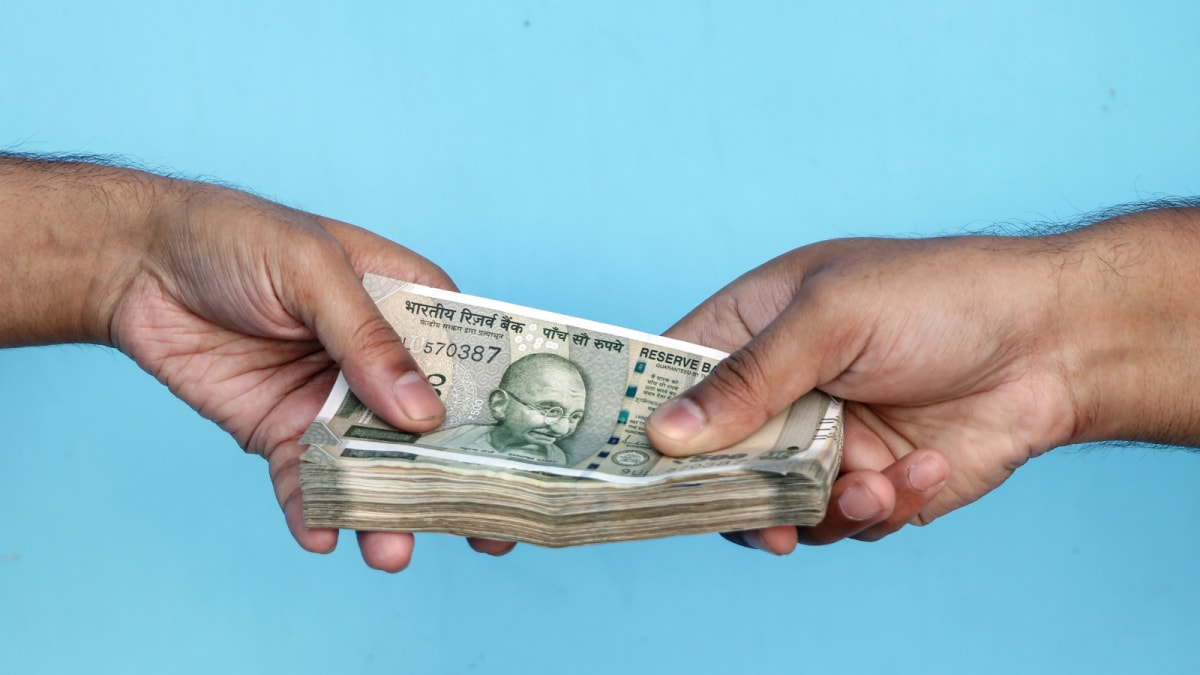
 Business5 days ago
Business5 days agoHitting The ‘High Notes’ In Ties: Nepal Set To Lift Ban On Indian Bills Above ₹100
-

 Politics1 week ago
Politics1 week agoTrump launches gold card programme for expedited visas with a $1m price tag
-

 Business1 week ago
Business1 week agoRivian turns to AI, autonomy to woo investors as EV sales stall
-

 Fashion1 week ago
Fashion1 week agoTommy Hilfiger appoints Sergio Pérez as global menswear ambassador
-

 Sports1 week ago
Sports1 week agoPolice detain Michigan head football coach Sherrone Moore after firing, salacious details emerge: report
-

 Business1 week ago
Business1 week agoCoca-Cola taps COO Henrique Braun to replace James Quincey as CEO in 2026
-

 Tech1 week ago
Tech1 week agoGoogle DeepMind partners with UK government to deliver AI | Computer Weekly
-

 Sports1 week ago
Sports1 week agoU.S. House passes bill to combat stadium drones





